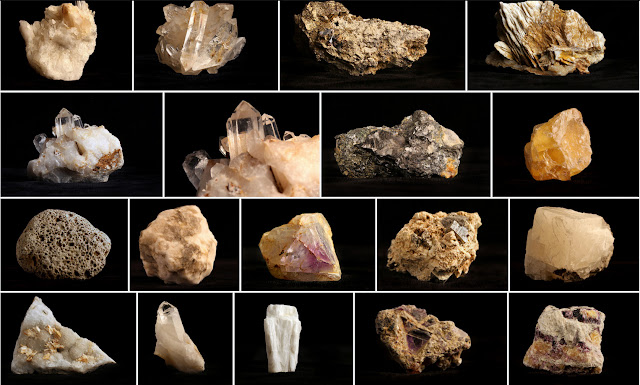 Having been raised along the sedimentary strata of coastal California near Santa Cruz, I was no stranger to fossilized shark teeth as a child. But, after relocating to the Midwest at the end of 1979, I feared that my ancient tooth hunting days might be over. And now, thirty-eight years later (with a rockhound-of-a-son about the same age I was when I moved) we took a little geological roadtrip to Alabama and then back up through Mississippi.
Having been raised along the sedimentary strata of coastal California near Santa Cruz, I was no stranger to fossilized shark teeth as a child. But, after relocating to the Midwest at the end of 1979, I feared that my ancient tooth hunting days might be over. And now, thirty-eight years later (with a rockhound-of-a-son about the same age I was when I moved) we took a little geological roadtrip to Alabama and then back up through Mississippi.I stumbled across information about the W.M. Browning Cretaceous Park online a few months back. It seemed like a dream come true--fossilized shark's teeth in a modest creek only about four hours away from home. I was chomping at the bit, waiting for spring break so that Chase and I could hit some fossil hotspots across the South, especially excited to sift through the sandy gravels of Twentymile Creek just north of Frankstown, Mississippi.
 |
| Looking to the West. Hwy 45 passes over |
 |
| Looking East (County Rd. 7450 bridge) |
We parked, changed into our river shoes, grabbed our floating sifter (constructed of 1/4" hardware cloth with a 2x4 frame, and foam zip-tied to two sides for buoyancy) and shovel, before hiking down the steep northern bank to the cozy creek.
Initially we traveled about twenty-five yards to the east (left) and did several test screens from the river bottom, but found nothing. Another fossil enthusiast came walking up from the west (right) and shared with us that he had better luck towards the west (between where we were and where Highway 45 passed high above the creek).
He showed us his finds for the day, which included several fairly large and complete teeth. My pulse quickened and my resolve renewed. Chase and I thanked him for the advice, and then we heeded it.
After several unsuccessful screen tests of the sandy gravel along the southern bank, we decided to test a few shovelfuls from the bottom of the (fairly warm) creek. One of our early shovel loads immediately yielded a gorgeous black tooth. Chase snagged it up with a yell before I could hardly even focus on it. We continued in the center of the creek, typically finding a tooth about every two or three screens of material. Occasionally we would be blessed to find two teeth in one screen. We relocated to various spots off to the west, going as far as the overpass, but returned to our initial "honey hole" and continued to reap the benefits.
After three hours of back-breaking shovel work (Chase said that his skills were better served running the sifter!) we climbed back up the bank and nabbed a hotel room in Corinth, about thirty minutes north. We laid out our treasures, roughly 30 teeth, with great satisfaction. Since returning home, Chase has repeatedly spoken of heading back to Twentymile Creek. It is thrilling to see my son get just as excited as I was at his age when I had the opportunity to sift for shark's teeth.
CLICK HERE for a Google Maps locator for this fossil site.
Here is a short video about my recent expedition to the W. M. Browning Cretaceous Park to hunt for Shark's Teeth fossils:
Visit our Rockhounding USA Store. Find that perfect gift for any Rockhound or Prospector in your life!













































